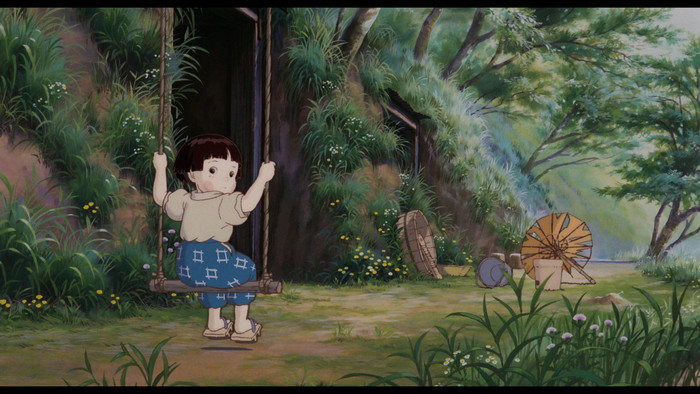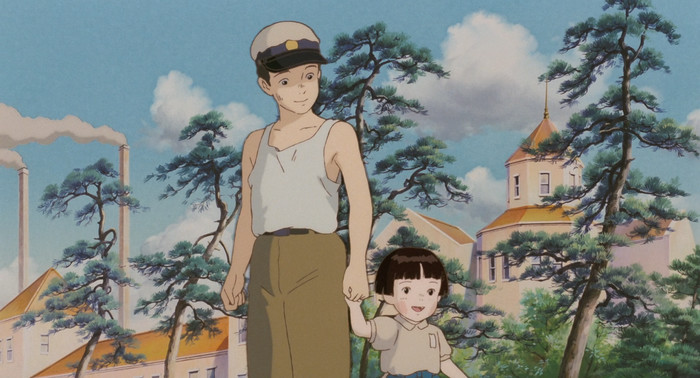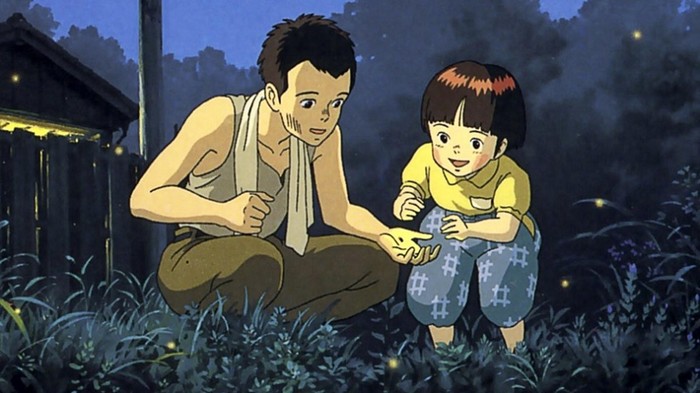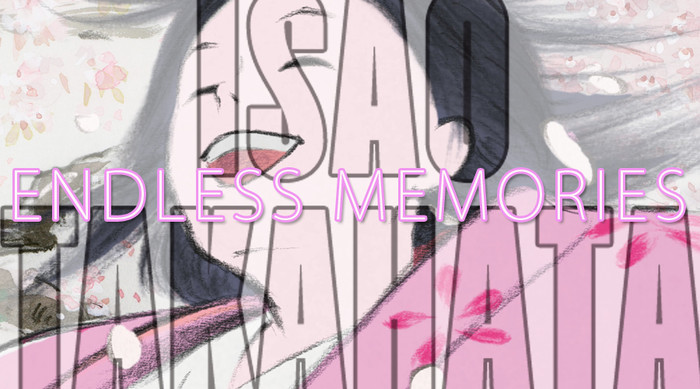Isao Takahata: Endless Memories
Part III: Grave of the Fireflies
by Gerald Rathkolb,
War is one of the most popular subjects in anime. When it comes to works like Legend of the Galactic Heroes, the entirety of Gundam, even works like Attack on Titan and Full Metal Panic! revel in the display of battles told usually with the message of “War is terrible” but with the undertone of, “Yes but it's also AWESOME.” Rarely does anime deal with war in a more somber, realistic tone and settle on the reality that war is not only awful, but also affects those who are the most vulnerable and have the least to do with it. Grave of the Fireflies was made by people who had first hand experience as the victims of war. War is not “awesome.” War is not fun. Grave of the Fireflies depicts war as suffering on a huge scale told in a way no other anime has done before or since.

The film is based on the 1967 semi-autobiographical short story by Akiyuki Nosaka and is based closely on the experiences he went through when his city was bombed during World War II. During World War II Nosaka lost two sisters and his adoptive father, with one of the sisters, Keiko, dying due to malnutrition.
From the very opening of Fireflies, it's clear that the film wants to dispel any hopes or misgivings about what may befall to its two protagonists. The film opens with Seita, a boy of 14, taking his last breath in a subway before he dies from malnutrition. Just one of the many anonymous bodies in that subway who suffer the same fate. A street cleaner finds what appears to be a small tin box filled with ashes which he callously pitches out into the night. We see the ghosts of the boy, Seita and his four-year-old sister Setsuko, revealing to us that this film is a flashback. This obliterates any hope that these children will live to see the end of the film, but it also allows us to concentrate on how they lived and what they experienced.
Like the short story of its namesake, Grave of the Fireflies follows the lives of Seita and Setsuko in 1945 during the final months of World War II in the Pacific. When most Americans think about casualties in Japan during World War II, the image that endures the most are the atomic bombings of Hiroshima and Nagasaki - however most civilian deaths in Japan were caused by the firebombing that took place in virtually every major city in Japan, leaving tens of millions homeless and killing over 200,000. Grave of the Fireflies features no atomic bombings and they are never even mentioned by name. The author, Akiyuki Nosaka, lived through these events himself, however, Isao Takahata did too. Takahata had to run, barefoot, away from the fire bombings while carrying his little sister - meaning this movie is not just about Nosaka, this movie is about Takahata himself, done with the true-to-life detail that only someone who lived through the events of the film could capture like this. How often does a director direct events of a war movie that they themselves experienced?

In terms of an Isao Takahata work, or really any animated feature, Grave of the Fireflies was done at a lighting pace with its production lasting only one year, forcing Takahata to take a more conventional approach to this film unlike the experimental look of later works like The Tale of the Princess Kaguya and My Neighbors the Yamadas. Maybe the necessity of keeping production moving helped, as the result is one of the single most beautiful, devastating and memorable works in Japanese animation. Few war movies, animated or otherwise even come close to the beauty, sadness and emotional heartbreak that this work does.
I first saw Grave of the Fireflies when it was originally released on VHS by Central Park Media and at that stage in my fandom I was looking for something to show my family that wasn't just action and science fiction. Fireflies was one of the first anime that I'd seen that didn't rely on action set pieces, robots, or even a fantasy setting and once I showed it to the rest of my family it quickly became the number one movie my parents would talk about with friends and even customers.
What I love about Isao Takahata is illustrated beautifully by this film; Takahata wasn't concerned with how marketable Fireflies was, what merchandising could be made or if it would hit the right demographic. That was Miyazaki's job. Takahata was making a film about children experiencing the horrors of war and the insensitivity of man, a film about survival. Seita and Setsuko are suffering, they've lost their home and their mother, possibly their father too yet the aunt they move in with makes living with them so uncomfortable they are forced to move out. Farmers refuse to part with food - neighbors refuse to, or are unable to help, illustrating the stark reality that money is useless when there's nothing left to buy.
However, Grave of the Fireflies isn't a film that revels in showing the suffering of it's protagonists. This is not She: The Ultimate Weapon, this is not disaster porn, this is, most importantly, a film about life, about making the best of any situation that's handed to you. Some of the most beautiful, memorable moments in the film occur once Seita and Setsuko have lost everything. This is a film that understands that a quiet moment of Setsuko and Seita releasing fireflies in their makeshift bed in a cave is as powerful and as touching as any battle sequence put to film.

It's hard for me to express how much I love this film (even though that's literally my job). I own this on DVD and Blu-ray and this is a rare time where I'd recommend everyone purchase both the 2002 DVD release and the 2012 Blu-ray. The DVD contains an entire disk of extras including an interview with Roger Ebert and Isao Takahata all made for that release and not put on any subsequent releases. If you showed this movie to 1,000 anime fans and asked them what their favorite anime was, I'm sure none of them would put this on that list even if each one was brought to tears by it. Fireflies is not a film you watch for a fun time, it took me several years to bring myself to watch this again. However, each time I come back to it I appreciate it more and more. This film is so packed with details, how Setsuko moves, the actions of characters in the background, a quick scene of a man casually stepping over the charred remains of town citizens, every moment of this film is packed meaning and beauty.
If someone asked me to make a list of “Required Viewing” for anime fans, I'd argue something like that is ridiculous, everyone has different tastes and sensibilities, but no, Grave of the Fireflies is something every anime fan, every film fan, every person with some humanity in them should see. There has never been an anime like Grave of the Fireflies and there will never be one again.
Grave of the Fireflies is part of GKIDS and Fathom Events' Studio Ghibli Fest and will be running in select theaters August 12, 13 and 15, 2018. Click here for showtimes and tickets.
discuss this in the forum (61 posts) |
this article has been modified since it was originally posted; see change history
back to Isao Takahata: Endless Memories
Feature homepage / archives
